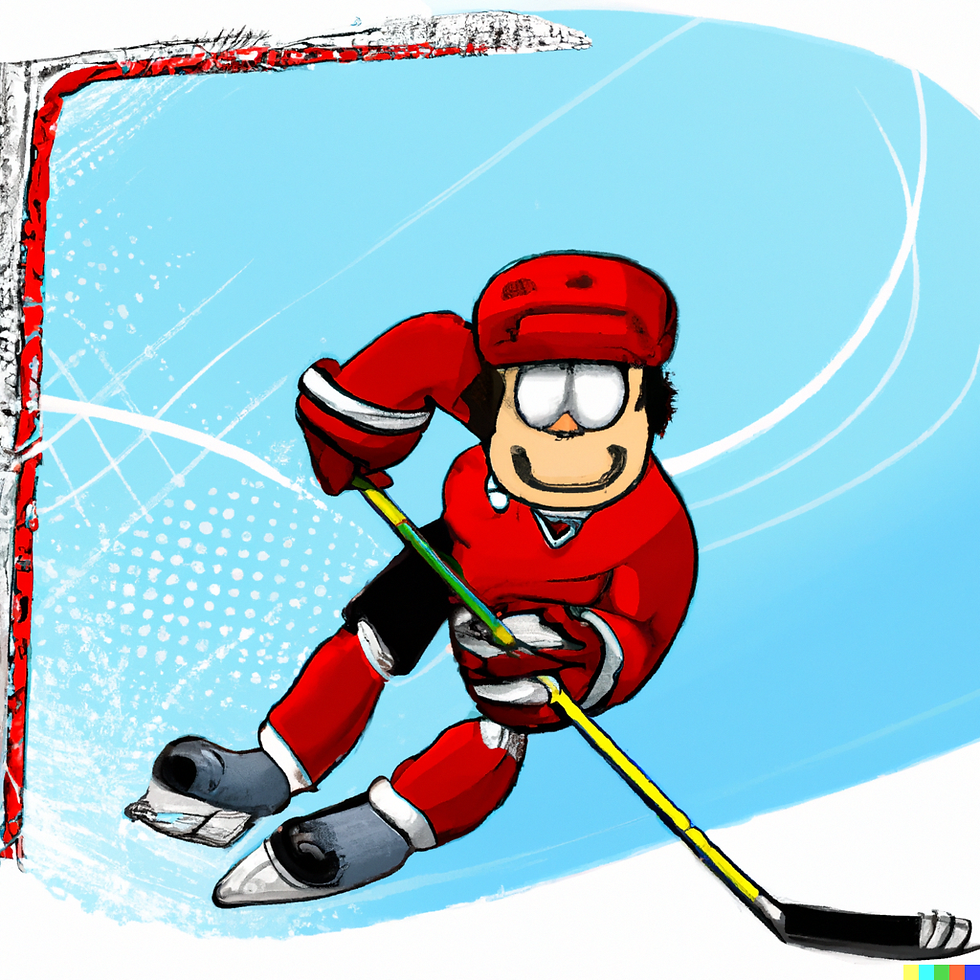Power Skating and Proper Technique: The Building Blocks for Young Hockey Players
- James Witmer
- Apr 2, 2023
- 2 min read
Power skating and proper technique are crucial components of a successful hockey player's skill set. For young players, developing these skills early on can significantly impact their future performance on the ice. The right guidance from qualified instructors can make all the difference in helping young athletes reach their potential.
Power skating is the foundation of a player's on-ice movement, enabling them to generate speed, agility, and balance. It encompasses various techniques and drills that focus on strengthening the lower body, enhancing edge control, and improving stride efficiency. A strong power skater can cover more ground quickly, change directions with ease, and maintain their balance in challenging situations.
For young hockey players, developing power skating skills early on is vital, as it can set the stage for success in other aspects of the game. Improved skating abilities can lead to better puck control, more effective shots, and stronger defensive play. Moreover, young players with exceptional skating skills often have an edge over their peers when it comes to making an impact on the ice.
Proper skating technique is a crucial component of power skating development. A player's body position, stride, and edge control directly impact their skating efficiency and overall performance.
For example, maintaining a low stance with bent knees and a forward lean can provide better balance and a stronger push-off during each stride. Additionally, proper edge control helps players make quick, tight turns and maintain their speed during transitions.
It's essential for young players to develop these techniques early on, as it can be more challenging to break bad habits later in their hockey career. Proper skating technique not only leads to better performance but can also help prevent injuries by ensuring players use their body more efficiently on the ice.
Skilled, knowledgeable instructors play a crucial role in helping young hockey players develop their power skating and technique. A good instructor will:
Break down complex concepts into easy-to-understand steps.
Customize training to fit the needs and abilities of each player.
Employ a variety of drills and exercises to target specific areas of improvement.
Provide constructive feedback and encouragement to help players grow.
Emphasize safety and injury prevention in their training methods.
When searching for a power skating instructor, consider their credentials, experience, and teaching style. Look for instructors with a strong background in hockey or figure skating, as they will likely have a deeper understanding of the nuances of skating technique. Additionally, seek recommendations from other parents, coaches, or players to find a reputable instructor in your area.
Power skating and proper technique are essential building blocks for young hockey players. By focusing on these skills early in their development, players can set themselves up for success in other areas of the game. A good instructor can provide invaluable guidance and support, helping young athletes reach their full potential on the ice. Investing time and effort in mastering power skating and proper technique will pay off in the long run, leading to better performance, increased confidence, and a greater enjoyment of the sport.








